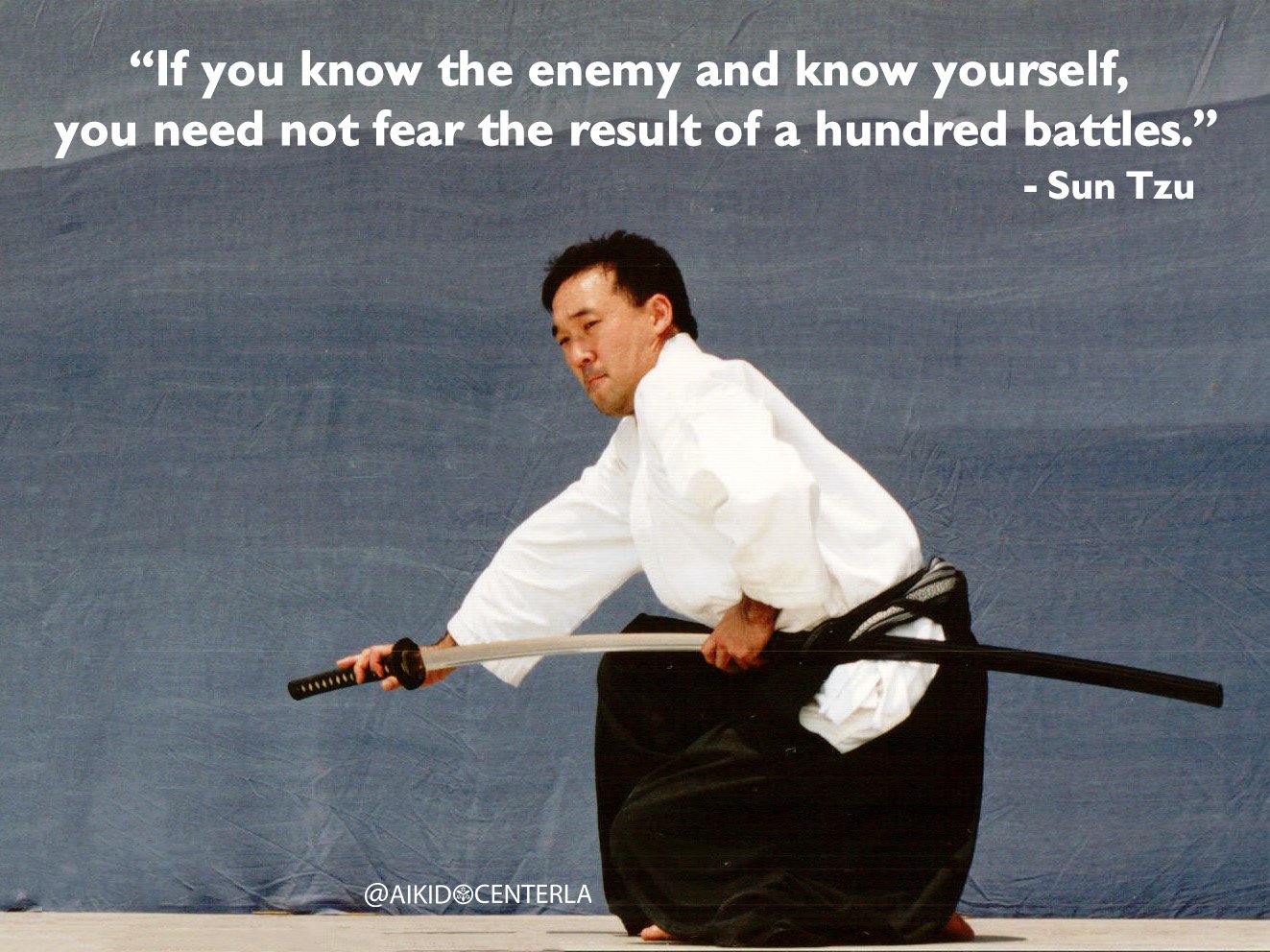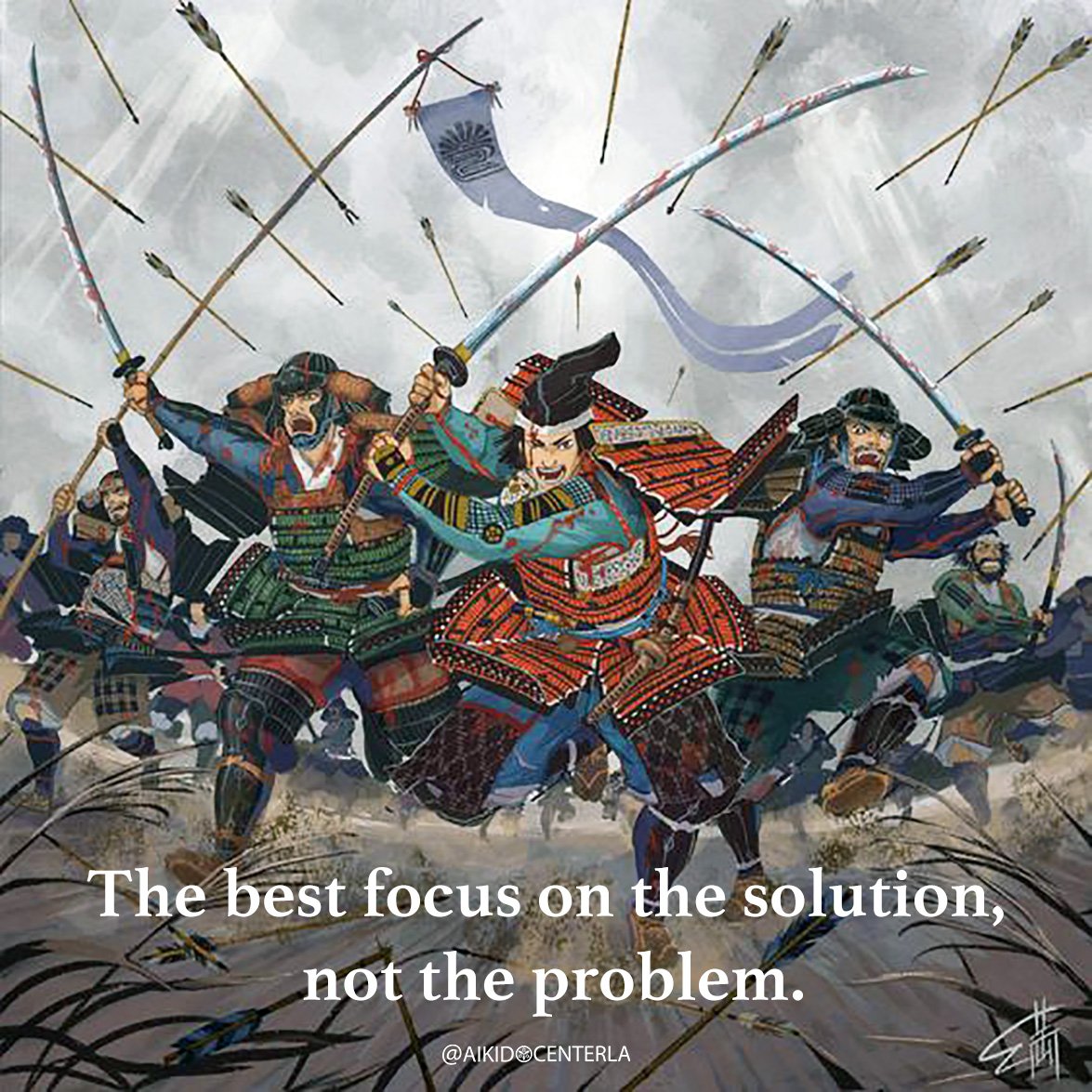Editor’s note: This article was written by Ito Sensei and published in the September 2023 edition of El Budoka Magazine.
Read the Spanish version
The place that all martial artists are striving for in their training is mushin (無心) or “no mind.” When we say “no-mind” we don’t mean a place of apathy or indifference. In Buddhism, it is said that in a state of mushin, “the mind only observes and does not react.” Miyamoto Musashi’s advisor the monk Takuan Soho wrote in his book The Unfettered Mind that “When this No-Mind has been well developed, the mind does not stop with one thing nor does it lack any one thing.” In Aikido, this mushin state is referred to as ki no nagare (氣の流れ) or “the flow of ki.” In ki no nagare, our minds flow and our bodies follow. Therefore, mushin or ki no nagare is a place in one’s training where nothing exists but at the same time everything exists; there is movement, but at the same time there is no movement.
Mushin and ki no nagare are those esoteric or abstract Japanese concepts that are easy to talk about but hard to truly cultivate. Mushin and ki no nagare have this quality of being transparent or intangible or have this feeling of being “without” form.
Bruce Lee famously said, “Don't get set into one form, adapt it and build your own, and let it grow, be like water. Empty your mind, be formless, shapeless — like water. Now you put water in a cup, it becomes the cup; You put water into a bottle it becomes the bottle; You put it in a teapot it becomes the teapot.” People often take this to mean that Bruce Lee is advocating that forms are too rigid and have no place in martial art training.
I think that what Bruce Lee is saying about forms is largely taken out of context. On a certain level, Bruce Lee is not talking about learning a traditional martial art but rather he is talking about the mindset one must have while engaging in the act of fighting. You might be thinking, “Aren’t they the same thing?” No, they are not.
A martial art is a system of body and mind development. Fighting is “displaying or engaging in violence, combat, or aggression.” The end goal of the martial arts is the cultivation of the self. The end goal of fighting is the destruction of the other. In fighting, we must use any means necessary to fell our opponents. At the same time, to overcome the chaos that comes with being in a fight, our minds must be spontaneous and “flow like water.” In learning a martial art, we must adhere to a form and use that form as vehicle to not only develop our bodies but to develop our minds more importantly.
Interestingly, the muishizen (無為自然) or the “spontaneous”mind that comes at the moment when one is fighting at a high level is the same mindset that a martial artist is striving to cultivate in their training and at every moment throughout their entire life. In Aikido, this muishizen mental state that we are striving for in ki no nagare. When our ki is flowing it is said to be kouzennoki (浩然の氣) or “unencumbered by worldly concerns” and this is what Bruce Lee could be alluding to when he says, “be like water.”
The difficult thing is that most of us cannot begin with a “be like water” mindset. In Japanese traditional training, it is thought that one can only reach this state by first adhering to a form, then mastering the form, and, finally, losing the form. The Japanese believe this because they understand that mindset is harder to develop than the body.
One theory is that the “body” exists externally and so it is easier to cultivate. To cultivate the body, we just need to put in the repetitions, and this is why mastering the body is always the first level. It is the easiest because it is singular.
The mind is different because it is faster, multifaceted, and more complex. Some researchers think that the average person has up to 60,000 thoughts per day where 80% are negative, and up to 95% are the exact same repetitive thoughts that we thought the day before. Therefore, because the mind is not singular and has so many negative and repetitive thoughts that is why it is harder to cultivate.
This is where the martial arts training comes in. Martial arts training requires the student to adhere to a set of movements that have to be done in a precise way. To be exacting requires total mental concentration. This focus helps to create singularity of the mind. Overtime, once we have cultivated the skill of a singular mind and routinely use our minds in a singular way, our minds have a breakthrough. At this breakthrough that singular focus ceases to become fixed - it becomes like a moving meditation. This is where Takuan Soho’s assertion of the “non-abiding” mind comes into play. To have a “non-abiding mind” is to have a mind which flows and does not become preoccupied with any one thing. It observes and does not react.
The way the Japanese understand mushin and kata in the martial arts is similar to how Buddhists understand emptiness. In the Heart Sutra it is written, shikisokuzeku (色即是空) or “form is emptiness, emptiness is form.” “Form is emptiness, emptiness is form” is very abstract. Supposedly, this concept came about when Siddhartha gained enlightenment and became the Buddha. The story goes that Siddhartha was starving himself under the bodhi tree and was given some rice porridge by Sujata. Upon receiving the rice, he realized that by fasting and giving up all world matters and entering into “emptiness” that there was no karma. The Buddha’s karma is to save all beings and thus in order to have emptiness, one must have karma and attachments and thus “form is emptiness, emptiness is form.” The same goes for the mastery of the martial arts. We have to have a form that we have mastered in order to let go of it and allow the movements to flow.
Therefore, what Bruce Lee is asserting by directing us to “be like water” is that at some place in our training, we must let go of the form of the movement so that we can be spontaneous or allow our minds and the movements to flow. I don’t think he is advocating to never have form but rather that at a certain level of one’s development, adhering to form is no longer necessary.
Form, structure, or plans are necessary. No one just learns how to write spontaneously. Most need to trace the letters first, then make the letters into words, and then form those words into sentences. Only then will their words be understandable, cognizant, and impactful. Until then they will just be unintelligible scribbles on cave walls.
Ralph Waldo Emerson said, “Sow a thought and you reap an action; sow an act and you reap a habit; sow a habit and you reap a character; sow a character and you reap a destiny.” Thus, every action begins as a thought.
The martial arts don’t exist to teach us how to destroy other people - it is far more deeper than that. The martial arts are a way of living. In the martial arts, to achieve mushin or ki no nagare is to have a mind that is free from emotion and burden which improves every aspect of our daily lives. When our minds flow freely, our bodies will follow spontaneously - that is mushin.





















